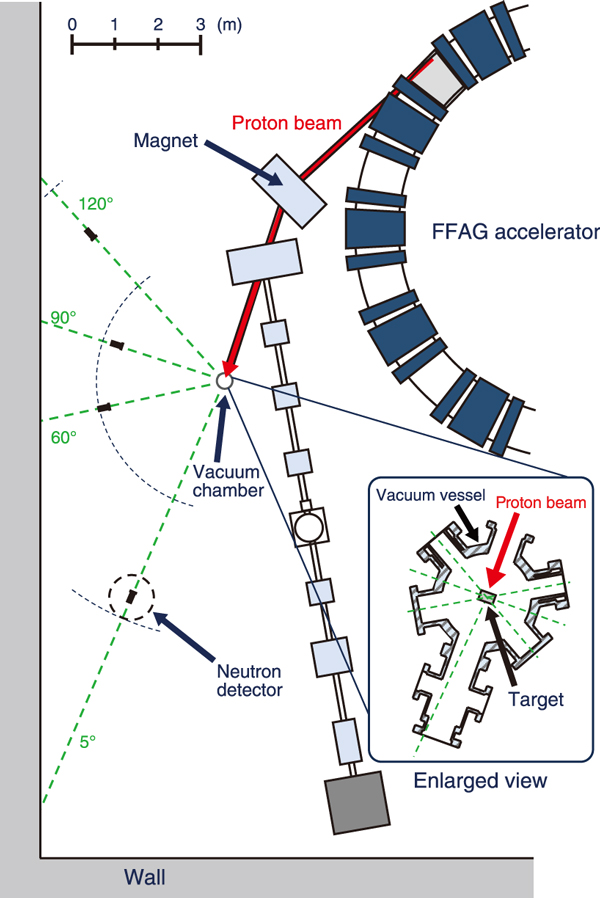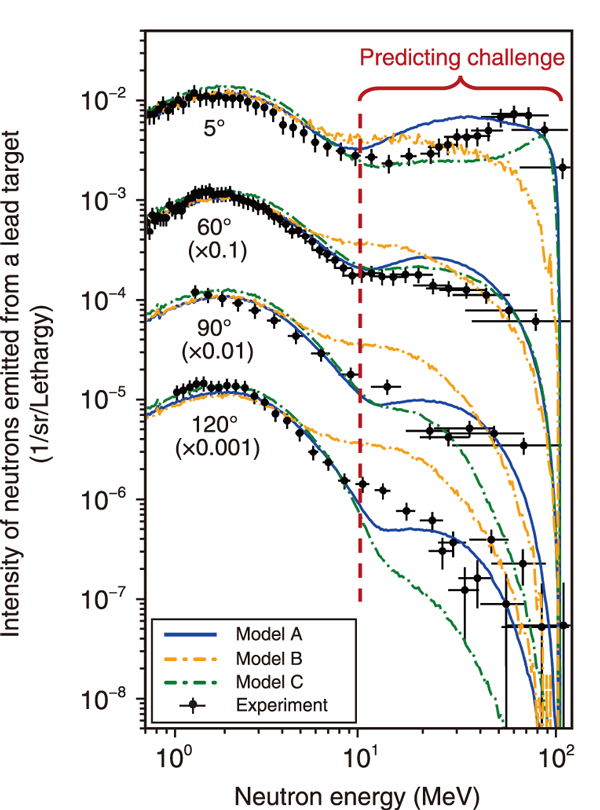
Fig.1 Experimental setup

Fig.2 Comparison of the experimental energy distribution of the neutrons emitted from a lead target with the analytical values obtained from three nuclear reaction models
Spent fuel from nuclear power plants remains radiotoxic for tens of thousands of years. In this context, accelerator-driven systems (ADSs) are attracting attention as a system to reduce the toxicity of such fuel. In the design of ADS, it is necessary to accurately predict the energy and intensity of the neutrons emitted from the target in various directions by the spallation reaction.
Various nuclear reaction models have been developed to predict the behavior of neutrons from spallation reactions. These models can predict the behavior of neutrons emitted in spallation reactions at high energies, above several hundred million electron volts, with high accuracy, but the lower the energy, the worse is the prediction accuracy. However, the accuracy of the nuclear reaction models has not been sufficiently verified because of a lack of experimental data in the 100 MeV region. In this study, data on spallation reactions occurring in this energy region were obtained experimentally to verify the nuclear reaction model.
In this experiment, a target in a vacuum vessel was irradiated by a 107 MeV proton beam produced by the Fixed-Field Alternating Gradient (FFAG) accelerator, and the energy distribution of the neutrons emitted from the target was measured over a wide range of emission angles relative to the beam direction (Fig.1). The targets were made of iron, lead, and bismuth, which are important elements in ADS design. A comparison of the measured neutron energy distributions with the analysis values obtained using the nuclear reaction model revealed that the current nuclear reaction model does not accurately predict neutrons emitted above 10 MeV (Fig.2).
The data and findings obtained in this study are expected to provide valuable data for improving the prediction accuracy of nuclear reaction models and contribute not only to the research and development of the ADS but also to the design of accelerator facilities using proton beams.
These results were obtained under the contract research project “Experimental Study of Nuclear Data for ADS using FFAG Proton Accelerator,” supported by MEXT Grant Number (JPMXD0219214562).
(Hiroki Iwamoto)
<Previous: 4-7 | Next: 5 Neutron and Synchrotron Radiation Research>